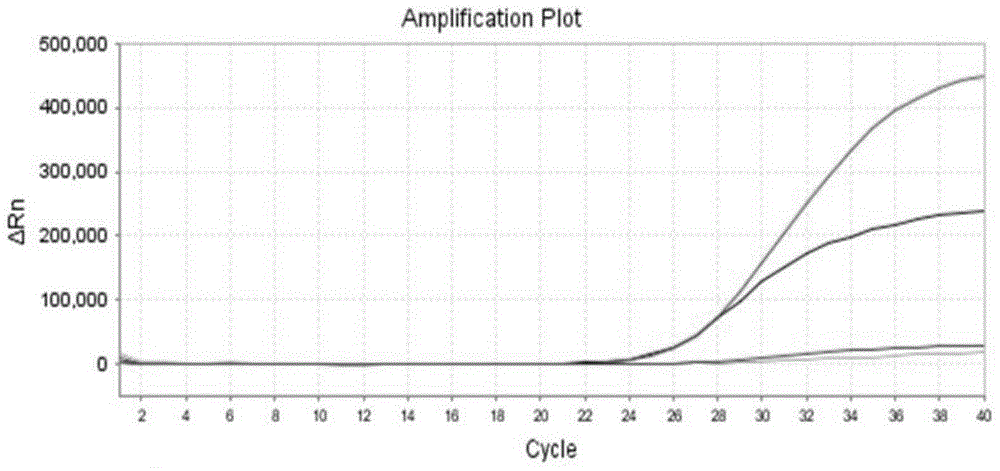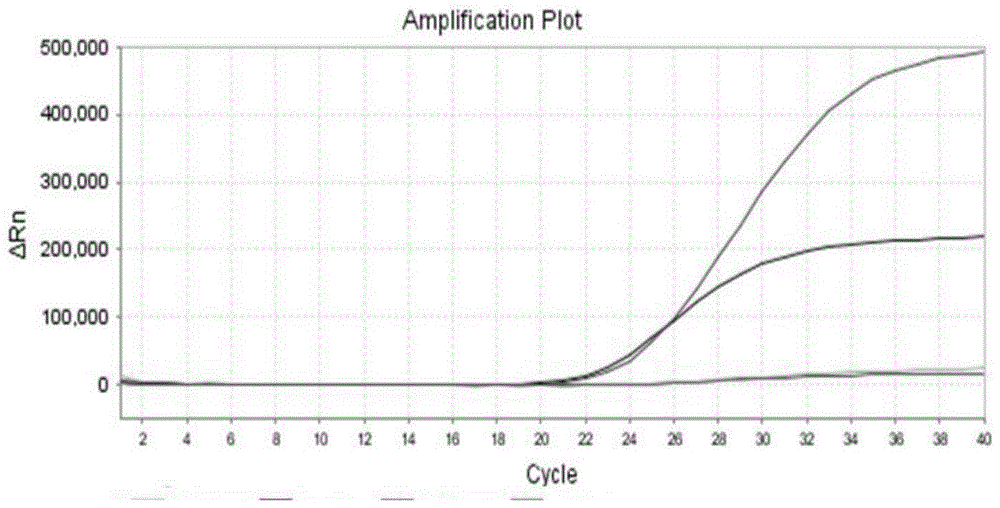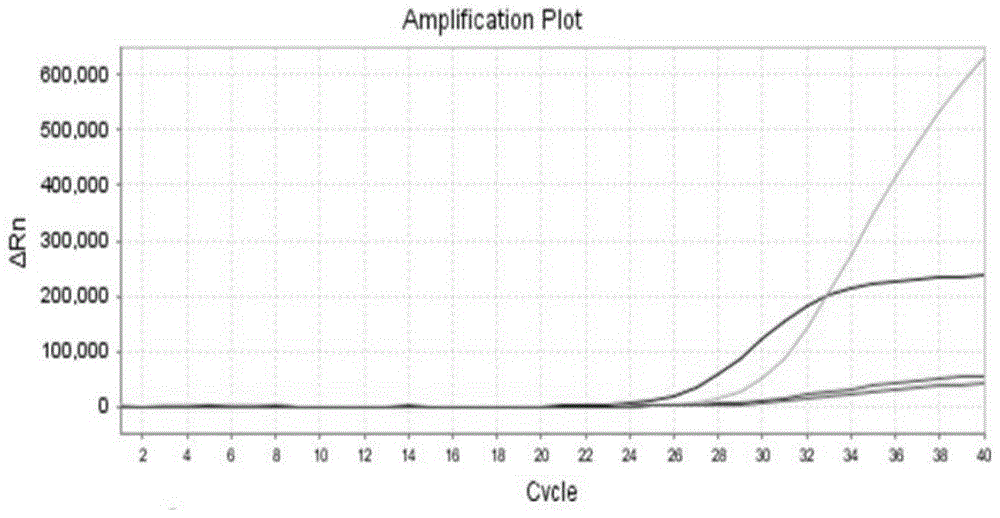Primers, probes and kits for detecting g6pd deficiency gene mutation
A deficiency and kit technology, applied in recombinant DNA technology, microbial assay/inspection, biochemical equipment and methods, etc., can solve the complex fusion front map of heterozygotes, low coverage of genetic testing kits, and interpretation of results. Difficulty and other problems to achieve the effect of reducing the cost of clinical testing, meeting the accuracy of testing, and meeting the needs of screening
- Summary
- Abstract
- Description
- Claims
- Application Information
AI Technical Summary
Problems solved by technology
Method used
Image
Examples
Embodiment 1
[0054] 1. Main components: The main components of the test kit for detecting G6PD deficiency gene mutation in this embodiment are shown in Table 6, and Table 6 is the composition of the test kit for detecting G6PD deficiency gene mutation in this embodiment List of main components.
[0055] Table 6
[0056]
[0057]
[0058] 2. Applicable instrument: fluorescent PCR amplification instrument (ABI 7500)
[0059] 3. Storage conditions and expiration date: The kit should be stored in the dark at below -18°C, avoiding repeated freezing and thawing. Validity period: 6 months.
[0060] 4. Sample requirements: The sample source of this kit is anticoagulated whole blood, and the anticoagulant used is sodium citrate or EDTA, and heparin cannot be used for anticoagulation.
[0061] 5. Inspection method: a. DNA extraction: This kit has no specified requirements for the extraction method of human genomic DNA. Generally, the laboratory routine method (phenol-chloroform extraction m...
PUM
 Login to View More
Login to View More Abstract
Description
Claims
Application Information
 Login to View More
Login to View More - R&D
- Intellectual Property
- Life Sciences
- Materials
- Tech Scout
- Unparalleled Data Quality
- Higher Quality Content
- 60% Fewer Hallucinations
Browse by: Latest US Patents, China's latest patents, Technical Efficacy Thesaurus, Application Domain, Technology Topic, Popular Technical Reports.
© 2025 PatSnap. All rights reserved.Legal|Privacy policy|Modern Slavery Act Transparency Statement|Sitemap|About US| Contact US: help@patsnap.com



